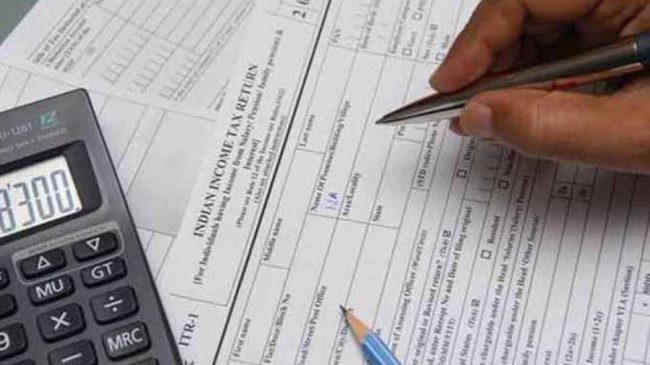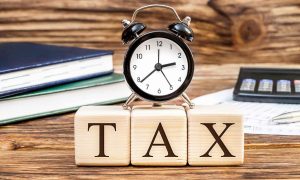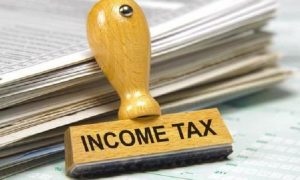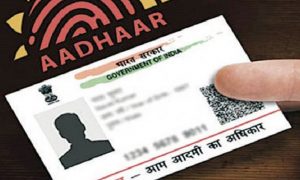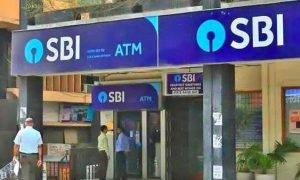To make the process of filing income tax return (ITR) easier, it’s important to keep the necessary documents handy. ITR-1 form, which is the form used by most salaried taxpayers, comes prefilled with much of the information.
In the government’s newly launched e-filing portal, too, data comes prefilled in ITR-1. However, do keep in mind that due to the numerous technical issues that have been plaguing the new tax filing portal, it becomes all the more important to cross-check the prefilled information in the ITR form.
Here is a look at nine documents you must collect and keep handy before you start filing your ITR for FY 2020-21.
1. Form-16
Form 16 is a TDS certificate issued to you by your employer providing details of the total salary paid to you less of tax exemptions you are eligible for, and tax deducted on it. Do keep in mind that employer has to mandatorily issue Form 16 if tax on your salary has been deducted during the financial year. If no TDS is deducted from your salary, then you can request your employer to provide you the Form 16.
Form-16 consists of two parts: Part-A and Part-B. Part-A includes details such as: the tax deducted by your employer during the year; your Permanent Account Number (PAN); PAN and TAN of your employer. Part-B of the form consists of your gross salary break-up details such as exempt allowances, perquisites etc.
Both Part-A and Part-B will bear the TRACES logo and a unique certificate ID.
Abhishek Soni, CEO, Tax2win.in, an ITR filing website says, “The new income tax portal offers pre-filled information in income tax return forms. Individuals filing ITR-1 using online method of ITR filing can easily cross check the data from Form 16. This is because ITR-1 form issued by the tax department is in sync with the information available in the Part-B of the Form 16.”
While receiving Form-16, one must check that the PAN mentioned on it is yours. If there is any discrepancy, then you must bring this to your employer’s notice. Your employer will rectify the mistakes in Form-16 and issue you a revised form.
2. Interest income and TDS certificates/Form 16A from banks and post office
The latest ITR forms asks individuals to provide break-up of the interest income received from different sources such as savings account, fixed deposits, etc. Thus, it is important to collect interest certificates from the banks and post office to know the total amount received by you during the financial year on savings accounts and various fixed deposits. Further, make sure to update and check your bank passbook/s for FY 2020-21 to report any other income such as interest from RBI bonds (taxable), tax exempt PPF interest etc. even if tax is not deducted.
If tax is deducted on the interest earned from fixed deposits, then you must also collect Form 16A/TDS certificates from the deductor e.g banks.
Sujit Bangar, Ex-IRS officer and founder, Taxbuddy.com, an ITR filing website says, “Additional tax-exemption of up to Rs 3,500 (single accounts) or Rs 7,000 (Joint accounts) can be claimed on interest earned from post office savings account under section 10(15)(i) of the Act. These deductions/exemptions can be claimed only if you have opted for old tax regime.”
3. TDS certificates from other incomes
If you have sold property during FY 2020-21, then the buyer will issue you Form-16B showing the TDS deducted on the amount paid to you.
Bangar says, “If you are a landlord earning rental income, then you should ask your tenant to provide you Form-16C for providing the details of TDS deducted on the rent received by you, if any.” As per the current laws, an individual is required to deduct TDS if the monthly rent is more than Rs 50,000. Further, you can check Form 26AS for the TDS details.
Then there is Form 16D which is a TDS certificate issued to contractors or professionals if the payment made to them by an individual/HUF during FY 2020-21 exceeds Rs 50 lakh. The tax is deducted at the time of making payment of a commission, brokerage, contractual payment or profession fee.
Soni says, “Similarly, tax will be deducted on the cash withdrawals made by an individual from a bank account if the withdrawal amount exceeds the specified limits. If you have received dividends from companies and/or equity mutual funds exceeding Rs 5,000, then tax will be deducted on that. Ensure that you have received TDS certificate (Form 16A) for the same. Also, same can be checked with Form 26AS.”
Do keep in mind that you are required to report the dividend income earned on quarterly basis during the FY in your tax return.
4. Form 26AS
Form 26AS is your consolidated annual tax statement. This is like your tax passbook which has information of all the taxes that have been deposited against your PAN. These include:
a) TDS deducted by employer;
b) TDS deducted by banks;
c) TDS deducted by any other organisations from payments made to you;
d) Advance taxes deposited by you during FY2020-21;
e) Self-assessment taxes paid by you.
You should ensure that all the taxes deducted in FY 2020-21 are reflecting against your PAN in Form-26AS.
5. Tax-saving investment, expenditure proofs
If you are planning to continue with the old tax regime at the time of filing ITR, then you must keep handy all documents related to eligible investments and expenditure (which can be used to claim deductions) made during FY 2020-21.
If you have declared and submitted all the tax-saving proofs relating to claiming exemptions under section 80C, section 80D and HRA exemption etc., then such details will reflect in your Form 16, provided you have opted for old tax regime for TDS on salary with your employer. However, if you have missed declaring any tax-saving proof, then it can be claimed at the time of filing ITR.
Health insurance premium paid for self, spouse and/or children in FY 2020-21 are eligible for deduction under section 80D so keep the premium paid receipts to refer to the amount of premium paid.
If you have taken a home loan from a bank or any other financial institution, do collect the loan statement for FY 2020-21. It will have the break-up details of how much principal and interest have been repaid during the FY and help you claim deduction on the interest paid.
Interest paid on the home loan can lower your tax liability under section 24. Bangar says, “If the property is self-occupied property, then loss in the form of interest deduction up to Rs 2 lakh can be claimed and set off against any other income including income from the salary in the first year. Unclaimed losses can be carried forward for 8 subsequent years but can be set off only if there is an income from house property (either same or different). If there is no income from house property in the next 8 years, then unclaimed losses cannot be set off.”
6. Capital gains
If you have earned capital gains from the sale of property and/ or mutual funds/ equity shares, then you will be required to report these gains in your ITR.
To compute capital gains (long-term or short-term) on sale of house property, land or building one would require the purchase deed and sale deed of the said property.
“Remember while reporting capital gains from sale of property in ITR-2, you will also be required to provide complete details of the buyer such as name, PAN, address etc.”, says Bangar.
In case of capital gains accrued on the sale of mutual funds and/or shares, one would require statements from mutual fund houses and/or brokers.
Further, in FY 2020-21, if you have sold bitcoins, then gains arising from such transactions must also be reported in ITR.
7. Aadhaar number
According to section 139AA of the Income-tax Act, an individual is required to quote his/her Aadhaar number while filing ITR.
Further, if you don’t have your Aadhaar number yet but have applied for the same, then you would be required to quote your enrolment ID in your ITR form.
8. Details of investment in unlisted shares
If you were holding unlisted shares during FY 2020-21, then you will have to disclose your holding in your ITR. In this case, do note that you cannot file your tax return using ITR-1 form even if your sources of income are salary and interest earned on bank account. You will have to use ITR-2.
You will have to provide the following details in ITR-2 with regards to the unlisted shares:
a) Name of Company
b) PAN of Company
c) Opening balance as on April 1, 2020, and cost of acquisition
d) Unlisted shares acquired during the year with date of purchase, face value of shares, issue price per share (in case of fresh issue)/ purchase price per share
e) Unlisted shares sold during the year and the amount received
f) Closing balance as on March 31, 2021, and cost of acquisition.
9. Bank account details
It is mandatory to provide details of the bank account(s) held by you during FY 2020-21. Even if you have closed your account during the FY, will have to report it in your ITR, says Bangar. You are required to mention your bank name, account number, account type and IFS code.

